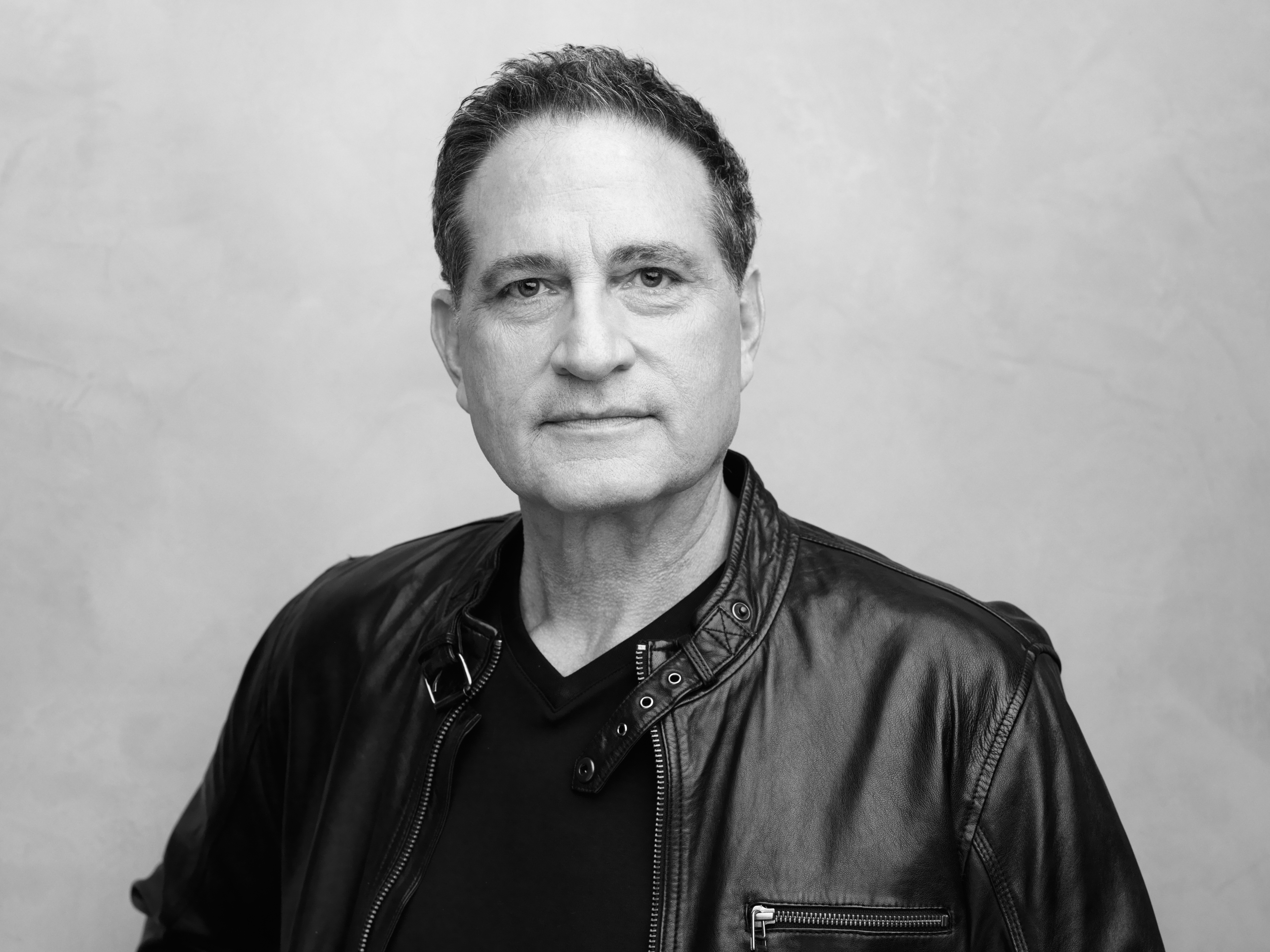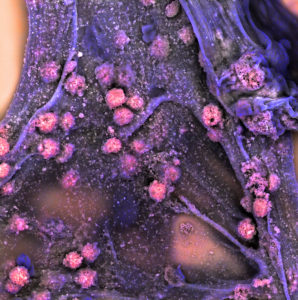Stem Cell Therapy for Chronic Disease: An Interview with Dr. Neil Riordan (Part 2)
 Neil Riordan, PhD is an accomplished scientist and one of the pioneers and leading experts in the use of non-controversial stem cells. He began his research career at the Riordan Clinic, leading the research team studying the pro-oxidant effects of high dose intravenous vitamin C on cancer. He went on to develop and refine mesenchymal stem cell technologies that he utilizes at the Stem Cell Institute in Panama, where these technologies continue to be implemented in patients with autoimmune and degenerative diseases and injuries. He is also the co-founder and Chief Science Officer of the Riordan-McKenna Institute in Dallas, Texas. In the stem cell arena, he and his colleagues have published more than 20 articles on multiple sclerosis, spinal cord injury, heart failure, rheumatoid arthritis, Duchenne muscular dystrophy, autism, and Charcot-Marie-Tooth Syndrome. His new book, Stem Cell Therapy: A Rising Tide: How Stem Cells Are Disrupting Medicine and Transforming Lives, has recently been published.
Neil Riordan, PhD is an accomplished scientist and one of the pioneers and leading experts in the use of non-controversial stem cells. He began his research career at the Riordan Clinic, leading the research team studying the pro-oxidant effects of high dose intravenous vitamin C on cancer. He went on to develop and refine mesenchymal stem cell technologies that he utilizes at the Stem Cell Institute in Panama, where these technologies continue to be implemented in patients with autoimmune and degenerative diseases and injuries. He is also the co-founder and Chief Science Officer of the Riordan-McKenna Institute in Dallas, Texas. In the stem cell arena, he and his colleagues have published more than 20 articles on multiple sclerosis, spinal cord injury, heart failure, rheumatoid arthritis, Duchenne muscular dystrophy, autism, and Charcot-Marie-Tooth Syndrome. His new book, Stem Cell Therapy: A Rising Tide: How Stem Cells Are Disrupting Medicine and Transforming Lives, has recently been published.
Anne: In your research is there anything nutritional that you have found that closely connects to stem cell modulation or regeneration?
NR: Well, we did studies years ago on bone marrow, sourced from a cancer center. We tested what was most beneficial to nourishing the marrow for stem cell production. We first screened the literature for things that could reduce or reverse radiation damage, things that could potentially protect and enhance telomere regeneration, things associated with longevity. We tested only things that are Generally Regarded as Safe (GRAS), because we wanted a product that could actually help people.
We basically found seven different things that can help. The most potent was an extract of lactobacillus fermentum, the bacteria that makes sourdough bread sour, and we’ve been making a product with that for years called Imm-KineTM, which is for the immune system. We didn’t know it had a magnificent impact on these stem cells. Blueberries have a strong effect, also green tea extract, ellagic acid from pomegranate, and goji berries. We tested these and put them into a product, did a clinical trial at Riordan Clinic and measured the circulating stem cells. The result is the product Stem-KineTM. When you take this nourishment for your marrow, you wind up with more circulating stem cells – EPCs, the endothelial precursor cells. They’re required for repair of your vascular system from the inside out, they survey and repair. As we age those cells go down and in certain disease conditions that number declines, most notably in diabetes. With well-controlled diabetes they’re 70% of a non-diabetic, with moderately controlled, that goes down to about 50%, and poorly controlled those circulating EPCs can be in the single digits. That’s why you see such high levels of cardiovascular disease, kidney disease, and retinopathy in diabetics. The more poorly controlled the diabetes, the more apt somebody is to have one of those conditions. You see the same ratio in erectile dysfunction and migraines. This was a targeted approach to what we could supplement to the masses that would bring improvement, a beneficial effect on those stem cell numbers.
The Riordan Clinic looks at what nutrients you’re missing. My dad (Dr. Hugh Riordan) would ask, “What’s the most important nutrient?” People would say vitamin C, or zinc was the popular one back in the day, and he’d say, “No, it’s the one you’re out of.” That holds true for your stem cells. If you deplete one thing your cells won’t grow.
Factors that can increase longevity and production of circulating stem cells (EPCs)1:
- Regular, moderate exercise
- Diet
- Sufficient protein
- pasture-raised meat and eggs
- fish (especially that high in Omega 3s such as salmon, sardines, and herring)
- organic beans
- organic dairy (if tolerated)
- Minimizing carbohydrates (such as sugar, potatoes, and grains)
- Anti-inflammatory foods
- Blueberries
- Goji berries
- Green tea extract
- Astragalus
- Carnosine
- Red wine (primarily resveratrol from the skin of red grapes)
- Folate
- Vitamin C
- Regulating blood sugar
- Sufficient protein
- Smoking cessation
- Living at a higher altitude
- Hyperbaric oxygen therapy
- Statin drugs (can have an anti-inflammatory effect)
Anne: Tell us about the work you are doing in Panama, the conditions you are treating, and the success you’ve seen.
NR: We have seven clinical trials, of which we’ve completed two. One was the MS (Multiple Sclerosis) trial, which I can’t tell you much about except there were no adverse events and some improvements. It’s submitted for publication now. We finished our autism trial as well, and it’s the same as the MS, no adverse events and some improvements. The safety of that is really important because it was the largest number of treatments, four injections each in four sessions on 33 individuals, 16 infusions of these cells, without a single serious adverse event. We just finished the one-year follow-up on everybody.
The vast majority of cases are people with autoimmune conditions because these cells are really good at resetting your immune system. There’s a very large study on RA (rheumatoid arthritis) that showed benefit to every single participant. You see RA drugs advertised every day, it’s a 14 billion dollar industry. The drugs to treat RA and other autoimmune conditions target one of two molecules: Interlukan-6 and TNF-alpha. Those are the generals of your immune system’s army. The injections (of drugs) bind those up, and you get a temporary benefit of lower levels of those molecules. However, the underlying reason for it is dysfunctional MSCs. There’s a very important cell called the T-regulatory cell, it’s one of your T cells. If the MSCs are working properly they will stimulate enough juice to keep your T cells multiplying. The net result of injecting MSCs in an RA patient is their T-regulatory cells numbers will go up. Just a single treatment will result in shutting down those molecules, and persist for six months. Eight months later it’s still significantly 50% lower. If you give them another shot, those key molecules are suppressed another 50%, which is 75% from the outset.
We see spinal cord injury patients, too. In my book I write about why the spine doesn’t heal itself. The MSCs are found on every blood vessel in your body. The liver is incredibly vascular, so you can cut out 80% of the liver and it can fully regenerate. However, you can’t even bruise the spinal cord without it having a hard time recovering. The gray matter of the cord is estimated to have 1/10th of the blood supply of the liver, and the white matter has 1/5th of the gray matter, which is 1/50th of the liver. From a clinical standpoint it’s very easy to treat spinal cord injury; we give IVs and injections of stem cells into the spinal column. In a rat study I cite a lot, they severed the spinal cord, and put human cells in there in a glue to keep the ends together, and the cells actually stimulated regeneration. In looking at it later, they couldn’t find any human cells, because those cells weren’t becoming anything, they were secreting what was needed for regeneration.
We have a lot of autistic patients. Our autism trial is the most downloaded article on that database. The main mechanism for the MSC to be useful is because autism, like a lot of disorders of the brain, is associated with inflammation of the brain, and these cells are potently anti-inflammatory. Many people with autism have inflamed nodules in their small intestines that resemble Crohn’s disease and there are really good data showing MSCs are good for Crohn’s disease. Regions of the brain have decreased blood flow with autism, and I believe that’s secondary to inflammation, which also creates more white matter and compresses blood flow even further. MSCs are a good way to break that immune cycle.
In Panama most patients found us through cellmedicine.com, and it’s been up since 2004, but 90% of our patients are now referrals from other patients. I get a lot of phone calls, and the reason I wrote this book is because I tend to answer all these questions over and over again, so it’s helped my life because people can find all the answers they’re looking for without having to ask me! People can apply on the website to see if they’re a candidate for treatment.
Anne: The big question is, how soon with this be available in the US? How many doctors do you know of who are doing something similar?
NR: What we do in Panama, no one is doing in the US. We have a special license in Panama that lets us create these cells, and in the US we have two compassionate use trials going on for two people with Duchenne’s muscular dystrophy. One in Wichita is named Ryan Benton, who I talk about a lot. His case has been published about quite a bit, the son of very close friends of mine growing up. Ryan’s now 31, we started treating him here three years ago. The FDA has signed off on our methods for our cells from Panama in that case, and for another, a six-year-old. It is happening in the US on a very small scale. We plan on going after three orphan conditions in the US with full FDA trials relatively soon. There’s a trial on clinicaltrials.gov with six centers in the US for treating lupus with umbilical cord MSCs, and that says a lot about how far we’ve come. There was recently a bill passed in Texas called Charlie’s Law, named after one of the representatives who passed away during the session, House Bill 810, which allows for the treatment of people utilizing adult stem cells in Texas regardless of the FDA, which is like one of those marijuana laws that’s against federal law. Texas is very conservative, so this only applies to adult stem cells, no fetal or embryonic cells are allowed to be used, and they have to be in clinical trials with large institutions. One of the comments was that we don’t want strip-mall stem cell clinics, and I completely agree with that. They put pretty high bars in there for where these treatments can take place. The only conditions that are treatable are terminal conditions, or severe chronic debilitating disease. That’s the wild card on which conditions those are, those regulations haven’t been written yet, which will take another six months to a year, so in about a year and a half is the soonest you could see it here, if everything goes smoothly.
The stem cells in our blood, also called circulating stem cells, are the tools our bodies use to repair damaged tissue and to keep us healthy. Aging, genetics, and poor lifestyle choices use up our supply of circulating stem cells. You can’t stop aging, and you can’t help genetics, but you can improve both areas by taking action with what you can change: your lifestyle choices. The harder you work to take care of the stem cells you have, and the less frequently you use them to repair damages you could have avoided with a healthy lifestyle, the more you are doing to protect what all the money in the world can’t buy back once it’s wasted: your own good health. (Riordan, 2017, p.______)
Dr. Neil Riordan will be giving a lecture about stem cell therapy at the Riordan Clinic on Friday, October 6 at 6:30PM. This lecture is open to the public and he will be signing copies of his new book. For more information and to register for this lecture, please visit: https://riordanclinic.org//events/.
- Riordan, N.H. (2017). Stem Cell Therapy: A Rising Tide: How Stem Cells Are Disrupting Medicine and Transforming Lives. United States of America: (n.p.).





